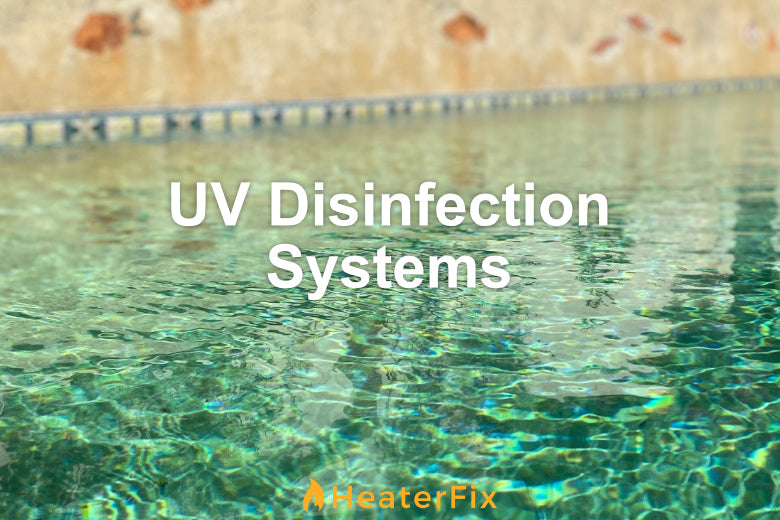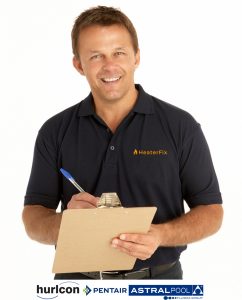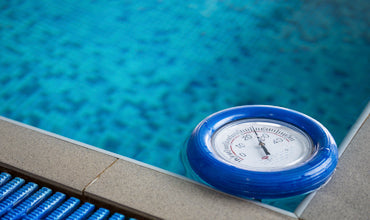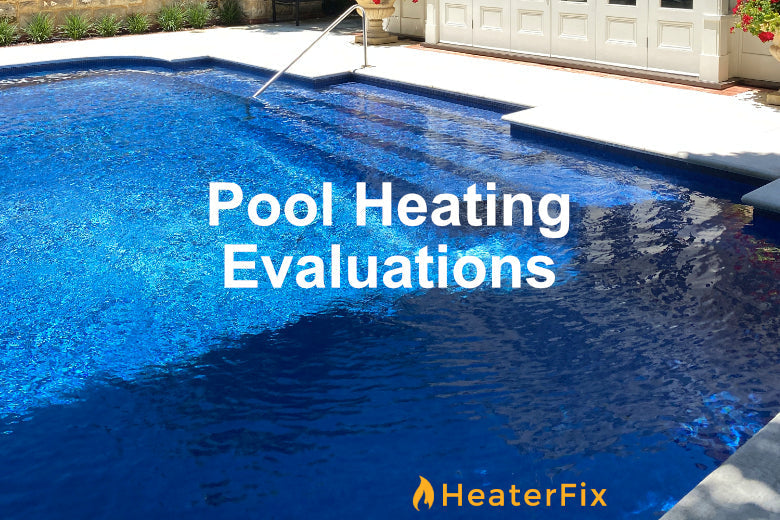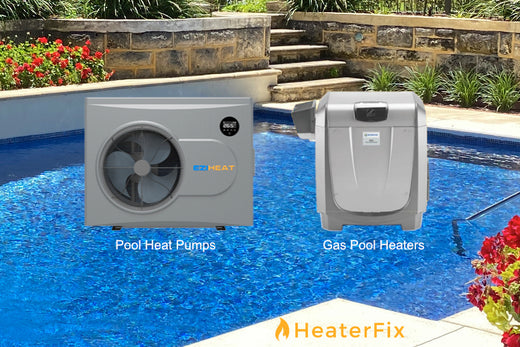UV Light Pool Sanitizers vs Advanced Oxidation Systems: Which Is Best for Your Pool?
If your family has sensitive skin, your water looks dull no matter what you do, or you’re worried about corrosion from aggressive water, you’re in the right place. This guide explains how modern UV light pool sanitizers and Advanced Oxidation (AOP) systems can make swimming more comfortable while keeping the water clear and balanced.
Why pool owners look beyond chlorine
Traditional chlorine works, but high doses, unstable pH, or poorly maintained chemistry can lead to stinging eyes, dry skin, chemical odour, and corrosion on metal components. That’s why more homeowners are adding a secondary system — either UV (ultraviolet) or AOP (Advanced Oxidation Process) — to improve hygiene, reduce combined chlorine (chloramines), and support lower chlorine setpoints.
What is a UV pool sanitizer?
A UV pool sanitizer exposes circulating water to germicidal ultraviolet light inside a sealed chamber. As the water passes through, UV damages the DNA/RNA of microorganisms (bacteria, viruses, algae), preventing them from reproducing. It’s a physical process, so it doesn’t add chemicals or by-products to the water.
Important: UV works in-line and has no residual effect in the pool. You still need a small, properly maintained residual sanitizer (usually low free chlorine) between filtration cycles.
What is an Advanced Oxidation (AOP) system?
AOP pool systems combine UV with a photocatalytic surface to produce short-lived but extremely powerful oxidisers (often called hydroxyl radicals). These oxidisers help break down stubborn organic compounds (body oils, lotions, micro-contaminants) that can make water look dull or contribute to chloramine formation.
Practically speaking, AOP focuses on both disinfection and oxidation. The payoff is exceptionally clear, low-odour water — often with reduced chlorine usage when chemistry is balanced.
Two proven options: Purion UV and Theralux Quantum Purity (AOP)
We install and support both approaches because different pools (and households) have different goals:
- Purion 2501 UV-PCU — a German-engineered ultraviolet pool system focused on dependable, in-line disinfection with robust PVC-U construction and a high pressure rating.
- Theralux Quantum Purity — an Australian-designed AOP pool sanitizer that combines UV and photocatalytic oxidation for powerful oxidation and ultra-clear, comfortable water.
Side-by-side: UV vs AOP for your swimming pool
| Feature | Purion UV (Ultraviolet) | Theralux Quantum Purity (AOP) |
|---|---|---|
| Core function | Inactivates microorganisms in-line using germicidal UV light. | Disinfects and oxidises organics via photocatalysis and hydroxyl radicals. |
| Water “feel” | Fresh, low-odour water with minimal additives. | “Diamond-sparkle” clarity; noticeably low odour and comfortable on skin/eyes. |
| Chlorine level | Supports lower free-chlorine setpoints when balanced (still required for residual). | Often enables very low chlorine operation due to strong oxidation (still requires residual). |
| Salt compatibility | Suitable for salt pools; PVC-U body and quartz sleeve. | Suitable for salt pools; quartz/ABS construction and inert catalyst. |
| Build emphasis | Robust engineering; high pressure rating; optional run-time monitoring. | Advanced oxidation performance with service indicator for lamp life. |
| Best for | Softer, fresh-feeling water and dependable germicidal control. | Maximum clarity, oxidation of oils/lotions, and a “resort-grade” water finish. |
Chlorine, comfort and water balance
Both ultraviolet pool systems and AOP pool sanitizers are designed to complement — not replace — standard sanitation. In a properly balanced pool, many owners operate comfortably with lower free-chlorine levels than before. That means less smell, fewer complaints about stinging eyes, and a nicer swim experience.
Keep pH, alkalinity and stabiliser within recommended ranges, and maintain a compliant residual sanitiser to protect the water between filtration cycles.
Saltwater pools
Good news: both systems are well-suited to salt pools. UV’s PVC-U and quartz build (Purion) and AOP’s quartz/ABS with inert catalyst (Theralux Quantum) are compatible with typical salt concentrations used by salt chlorinators. Balanced water protects equipment and preserves that “soft-water” feel people love.
Sizing, installation and maintenance
- Sizing: Choose based on pool volume and system flow. Theralux Quantum offers 35W/55W/110W models; Purion UV offers single 90w and dual-plant 180w and quad-plant 360w configurations for higher flow.
- Installation: Typically after filtration/heating and before chemical injection points, with service space for lamp/quartz access.
- Maintenance: Periodic lamp replacement, quartz sleeve inspection/cleaning, and seal renewal. Optional run-time counters (Purion) and lamp indicators (Theralux) help with scheduling.
So… which is best for your pool?
If you’re after beautifully soft, fresh water that’s gentle on skin and eyes, the Purion UV system is a superb choice. It’s ideal for families who want a clean, low-odour swim with minimal additives.
If you prefer ultra-clear, sparkling water with advanced oxidation that keeps your pool looking pristine, the Theralux Quantum Purity is hard to beat. It’s built for clarity, comfort and less chemical “work” overall.
Next steps
- Explore Theralux Quantum Purity (AOP) models and specifications.
- See Purion 2501 UV-PCU for robust UV disinfection in salt or freshwater pools.
- Prefer a quick summary? Download our brochure and share it with your pool technician.
Frequently asked questions
Can UV or AOP replace chlorine entirely?
No. Both systems work in-line and do not provide a residual in the pool. You’ll still maintain a small, compliant residual sanitiser for protection between filtration cycles.
Will UV or AOP make my water feel softer?
Most owners report less smell and less irritation when running lower chlorine, which can feel “softer.” AOP also helps oxidise organics that contribute to dull water and odour.
Are these systems compatible with salt chlorinators?
Yes. Both are commonly installed in salt pools. Maintain balanced water for best results and equipment life.
How do I choose sizing?
Match the unit to pool volume and hydraulic flow. See the model tables on each product page and speak with your installer to confirm final selection.
Information in this article is general in nature. Performance depends on correct sizing, installation and balanced water chemistry.

